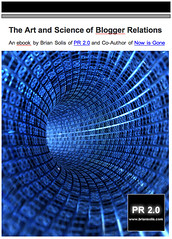I Dare You to Find a Better Wireless Handsfree Speakerphone Today

I
Bluetooth phones are everywhere. Whether you’re using the latest Treo, Pocket PC, Blackberry, or Razr, the ideal, must have companion is a wireless headset or handsfree speakerphone. Up until now, most of us were trading stylish designs for poor performance.
To be honest, almost everyday, I yank my Bluetooth headset from my ear and wind-up putting the phone right up to my ear.
Why, you ask, when Bluetooth is so advanced we couldn't possibly have any issues with it, right? No matter how sleek or capable the smartphone is, it IS at the end of the day a telephone, and as a phone, you want to hear and be heard. To date, the array of available Bluetooth headsets suffer from poor mic and earphone quality and ultimately, design/comfort to help prevent you appear as if you were assimilated by the Borg.
I was using a popular Bluetooth headset, even though its range and quality are far from what's advertised, it beats holding the phone to my ear most of the time – especially since the phone is wrapped in an aluminum case, (not the most comfortable thing to press against your head on long calls), and more importantly, dealing with the annoying hassles of corded headsets. Argh, just thinking about the knots and twists in long thin cables is maddening.
Ahh, but there's another solution to this dilemma – the third party hands-free speaker phone.
I've tried several of these from different manufacturers, but honestly, I haven't found one that lives up to my standards and expectations, or in most cases, their promises.
I picked up the MV900 because I have literally tried everything out there, and figured why not, since I'm single-handedly keeping all of these wireless manufacturers in business. To my astonishment, however, this was the first device that didn't force me to repeat things over and over. Also, people on the other end of the line wouldn't say, "um, you sound like you're in a tin can or a cave, take me off of speaker," or "what did you just say?"
With its relatively few "cons," it really is the best wireless "anything" out there...seriously. People don't realize that they're compromising on noise and echo cancellation, voice quality, etc., because all they're concerned with is small formfactors. Or, they're simply just ecstatic to finally have cut the cord from their old, cumbersome headsets.
Truth is, that they have no idea how annoying it is to be on the other end of the call.The MV900 is tiny, with a sleek and stylish design, and features a rechargeable LiON battery. To make dialing easier, and to keep both hands on the wheel, it offers voice dialing and voice caller ID. What's unique here though, is its dual SAMs (small array microphones), far field voice pickup, incredibly loud, full duplex speaker, and high performance noise/echo cancellation. I can even use this bad boy while driving with the windows open. Its performance is actually comparable to a traditional corded conference room speakerphone. Think of it as having a Polycom in your car.
If you need privacy, there’s a jack for a traditional headset. It also includes a handy clip for placing the speakerphone on your car visor.
So far in my inadvertent quest to become an expert in wireless communication devices, this is the best performing handsfree device I've owned to date. It hasn't completely replaced my Jabra headset with boom mic yet, simply because most of the time I need privacy. But when I'm in the car...this is my "go to" device.
It lives up to its claimed features and was definitely a hit with people on the other end of the call, many of whom weren't sure if they were on speaker phone, because none asked the infamous question, "Am I on speaker phone?" I had to tell them, "Hey I'm on a mobile speaker phone, how does it sound?" The combination of the portability, mics, speaker loudness and clarity, DSP, voice command interface, and most importantly, echo and noise cancellation, make this unit a top choice when shopping for a hands free device.
Pros: Portable, killer quality, voice recognition, noise/echo cancellation, incredible mics for accurate voice pickup Cons: Price is a bit steep, it could offer voice tags.
Tags: mvox bluetooth headset speakerphone wireless
Digg this article baby!
del.icio.us





























